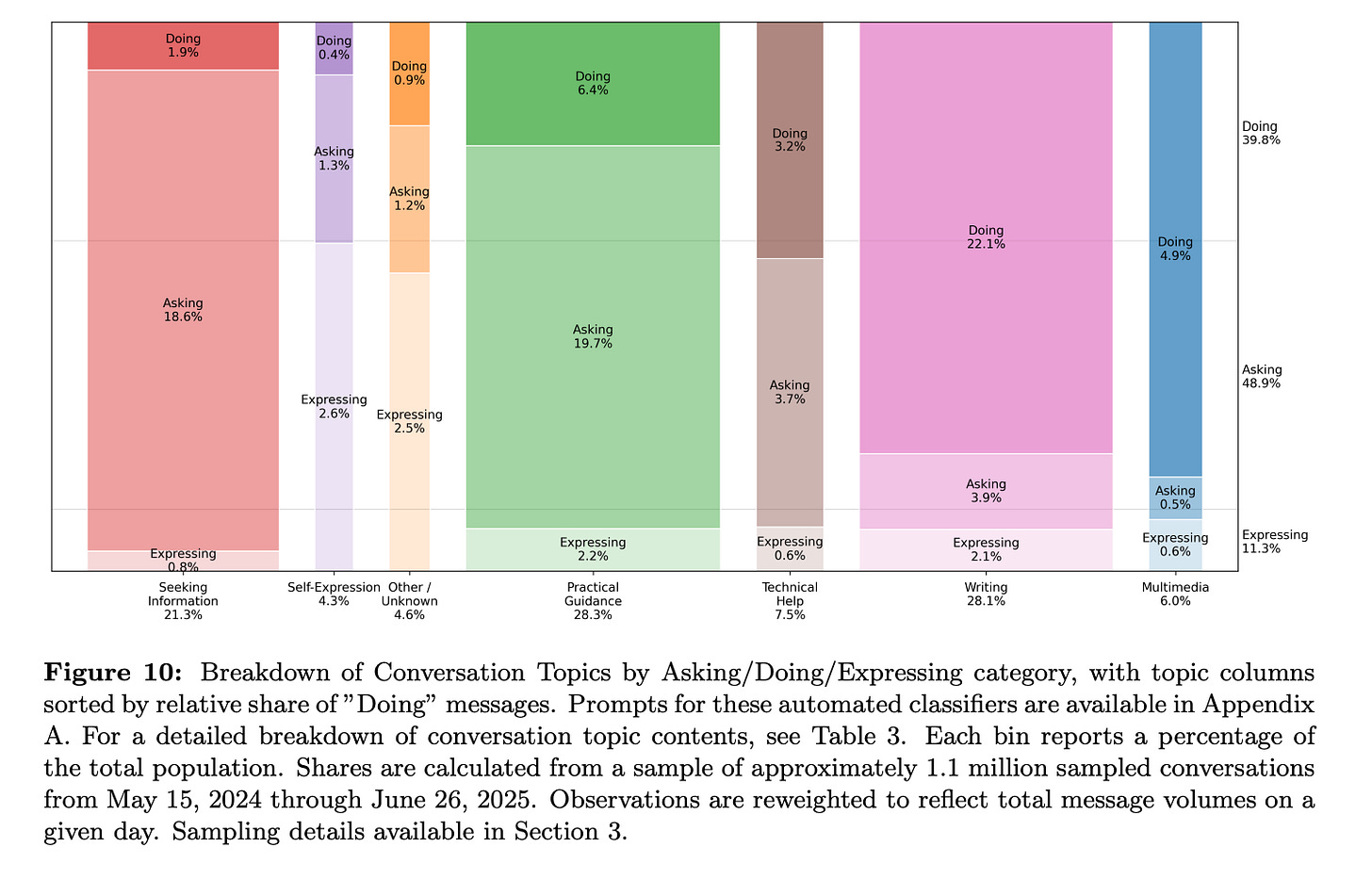We Have Enough Attention, Now We Need More Context
Key learnings from Anthropic and ChatGPT economic index and usage reports
Two of my favourite AI reports were released last week that anyone interested in AI should read: Anthropic Economic Index Report (Claude) and ChatGPT Usage Paper.
These annual reports provide the best view into how people are using Large Language Models (LLMs), drawing on usage data from the two largest platforms, Claude and ChatGPT.
While both underscore the unprecedented speed of AI adoption and its utility in knowledge work, this year we’re starting to see a glimpse into the next wave of AI startups—and also where the largest bottleneck will be to truly operate at scale.
How 700 million monthly active users used ChatGPT last year
ChatGPT’s consumer data shows that about 73% of its usage is now for non-work tasks, with 23% for works tasks. But perhaps most interesting, people are using AI primarily for advice. Practical Guidance - from fitness routines to career advice - now dominates at 28.3% of all usage.
In addition, the “Asking” category - seeking information to inform decisions - represents 49% of all messages and growing faster than doing tasks on your behalf.
One reason for this shift is that people naturally provide rich context when asking ChatGPT for advice. They share the background, the people involved, what they’ve tried before, and what they’re hoping for. This context-rich approach works—users rate these advice interactions significantly higher than simple task completion.
This trend will only accelerate. Over the next few months, I expect the AI user experience will continue to make this even better, with easier ways to upload critical information to improve the advice.
The Flip Side -Where Businesses Hit a Wall
Anthropic’s data provides a different perspective, given its heavy user-base for coding and engineering tasks. Seventy-seven percent of enterprise API usage is simple automation. Interestingly, companies want to move to complex advisory systems - the kind consumers are using above - but are struggling to do so.
The reason is Context. It is the largest constraint to more sophisticated use. As Anthropic notes, “Curating the right context for models will be important for high-impact deployments of AI in complex domains.”
Enterprise AI without proper context is like GPS without knowing your starting location—technically impressive but practically useless.
If you want AI to develop a sales strategy? It needs your CRM data, deal histories, competitive intel, market conditions, and all that tribal knowledge in people’s heads. The more sophisticated the advice you want, the more context you need to provide.
The information exists, but it’s scattered across a dozen systems, trapped in silos, buried in email threads, locked in legacy databases, and worst of all - sitting undocumented in employees’ minds. This isn’t a small problem. Anthropic warns:
“This could represent a barrier to broader enterprise deployment for some important tasks that rely on dispersed context that is not already centralized or digitized, and for some firms, costly data modernization and organizational investments to get this contextual information may be the largest bottleneck for AI adoption.“
Before AI can transform your business, you need to transform how you manage information. This isn’t about having all your data in one place. It’s about making your organization’s knowledge - both documented, recorded, captured and tribal - accessible to AI systems.
Your Next Move
Pick a decision your team makes regularly. Document all the context someone would need to make that decision well. Map out every piece of information needed. Where does that information live today? What’s digital? What’s in people’s heads? That gap is your roadmap.
The question isn’t whether AI can give good advice and be as good as human experts. The question is whether your business can give AI the context it needs to advise you.



